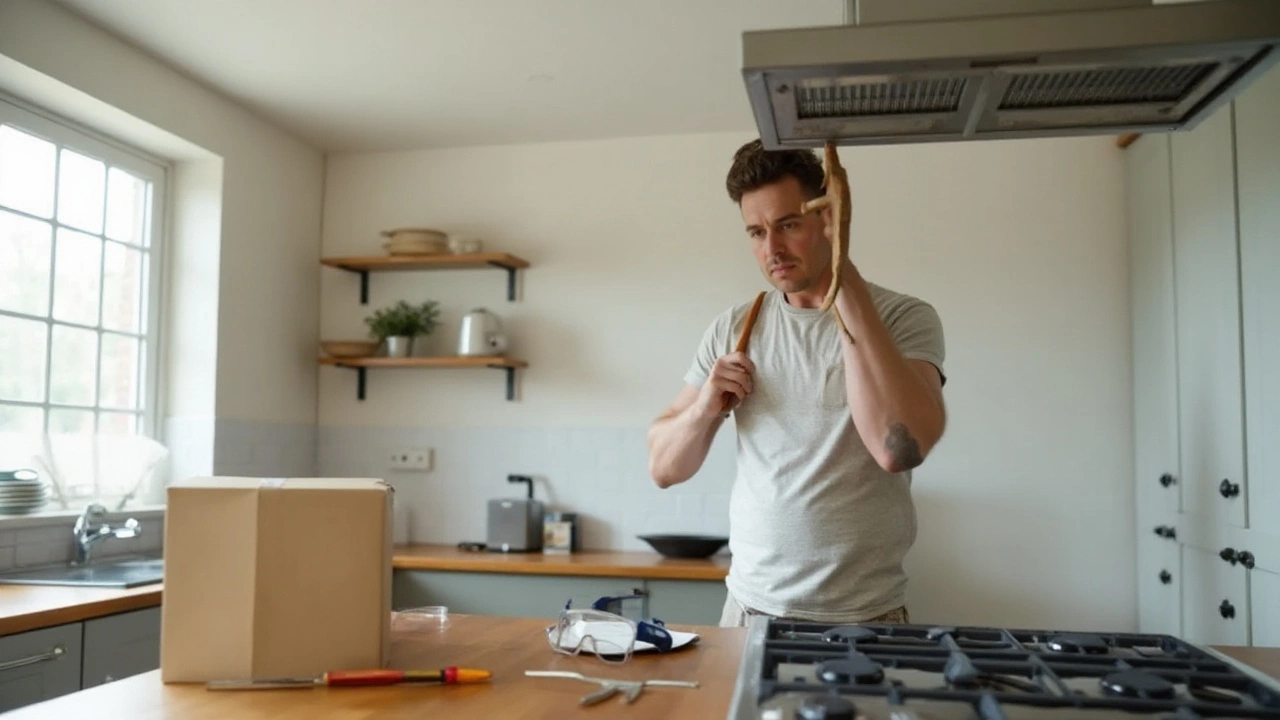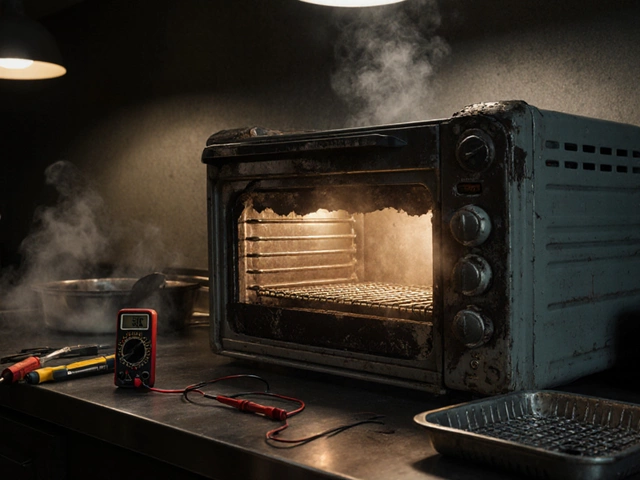Want to get rid of cooking smells and steam without hiring anyone? Installing a kitchen extractor fan yourself is easier than you think. With a few basic tools and a clear plan, you can have fresh air blowing in minutes. Let’s walk through what you need, the safest way to mount the fan, and the little tricks pros use.
First, gather your gear. You’ll need a screwdriver set, a drill with appropriate bits, a stud finder, a level, and a safety mask. The fan kit usually comes with a wiring harness, but keep extra electrical tape and wire connectors handy. If your kitchen has plasterboard, a small saw or utility knife will help cut the opening. Check the fan’s power rating matches your home’s circuit – most extractor fans run on a standard 13‑amp socket.
1. Choose the right spot. The fan should sit above the hob, about 650‑750 mm high, and align with any existing vent duct. Use the stud finder to spot ceiling joists; you’ll want to mount the fan between them for solid support.
2. Mark and cut the opening. Hold the fan’s frame against the ceiling and trace the outer edge. Double‑check the cut line with a level, then cut carefully with a drywall saw. Keep the cut clean – a jagged edge makes sealing harder.
3. Prepare the ducting. Most fans come with a flexible duct that connects to an external vent. Measure the distance to the outside wall, cut the duct to length, and secure it with duct tape. Avoid sharp bends; a smooth path keeps airflow strong.
4. Wire the fan. Turn off the circuit at the consumer unit. If you’re comfortable with basic wiring, connect the fan’s live, neutral, and earth wires to the corresponding points in the ceiling outlet. Twist the connections together, cap with connectors, and wrap with tape. If anything feels unsure, stop here and call a qualified electrician.
5. Mount the fan. Slide the fan into the ceiling opening and line up the mounting brackets. Secure it with the supplied screws, making sure it’s level. Tighten firmly – a wobbling fan makes noise and can damage the ceiling.
6. Seal and finish. Apply a bead of silicone sealant around the fan’s edge to keep moisture out. Fit any decorative covers or grills, then reinstall any ceiling tiles you removed.
7. Test it out. Switch the circuit back on and turn the fan on. You should hear a steady hum and feel air pulling up the duct. Check for vibrations and ensure the external vent flap opens properly.
If you run into any hiccups – like the fan not turning on, strange smells, or a noisy motor – it’s time to call in Bognor Regis Appliance Repair Experts. Our technicians know all fan models and can sort wiring or duct issues quickly.
Remember, safety first. Never work on live wires, and if you’re not 100% comfortable with the electrical part, a qualified electrician can finish the job in minutes. With the right prep, a new extractor fan can make your kitchen feel brighter, cleaner, and more comfortable.

Thinking of tackling an extractor fan installation on your own? Doing it yourself can be a rewarding project if you have the right tools and know-how. This guide breaks down the process into manageable steps, explains what to watch out for, and offers practical tips to avoid common pitfalls. You'll learn when it makes sense to go DIY and when you might need to call in a pro.

Keeping your home well-ventilated is essential, and extractor fans play a crucial role in maintaining air quality. Whether you're installing a new fan or repairing an old one, it's important to know who to call. Professional electricians and specialized ventilation technicians are the go-to experts. They ensure fans are properly installed and functioning efficiently, saving you from potential hassles down the road.

Replacing an extractor fan might seem challenging, but with the right tools and some guidance, it can be done efficiently. This guide outlines the process of replacing an extractor fan, from identifying signs it needs replacement to understanding how to choose the right model. Learn practical tips for handling installation and maintaining safety during the project. Make this task more approachable with easy-to-follow steps designed for beginners.

Wondering how long you can cope with a broken boiler? Get clear facts, repair timelines, survival tips, and legal details so you don’t get left in the cold.

Wondering if you actually need an extractor fan? This article unpacks whether having one is essential for your home, focusing on bathrooms, kitchens, and the impacts of poor ventilation. Get practical advice about when an extractor fan is a must, what can go wrong without one, and tips for repair and maintenance. Make sure your living space stays fresh, dry, and hassle-free. Say goodbye to foggy mirrors and damp smells.

Most extractor fans can be repaired with simple fixes like cleaning, capacitor replacement, or tightening parts. Learn when DIY works and when to call a pro to avoid costly damage from damp and mold.

If your cooker suddenly stopped working, it might be due to a range of reasons from electrical issues to simple user errors. Understanding the root cause is key to fixing the problem efficiently. In this article, we explore common reasons why cookers fail and offer practical troubleshooting tips to get your appliance working again. From checking the power supply to examining electrical components, we cover it all. Get your cooker back up and running with our straightforward guide.

If your electric oven isn't heating, it's usually due to a broken element, faulty thermostat, or blown thermal fuse. Learn how to diagnose and fix the most common causes quickly and safely.